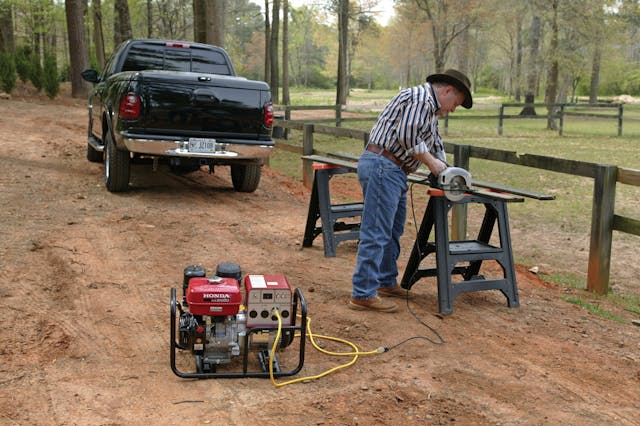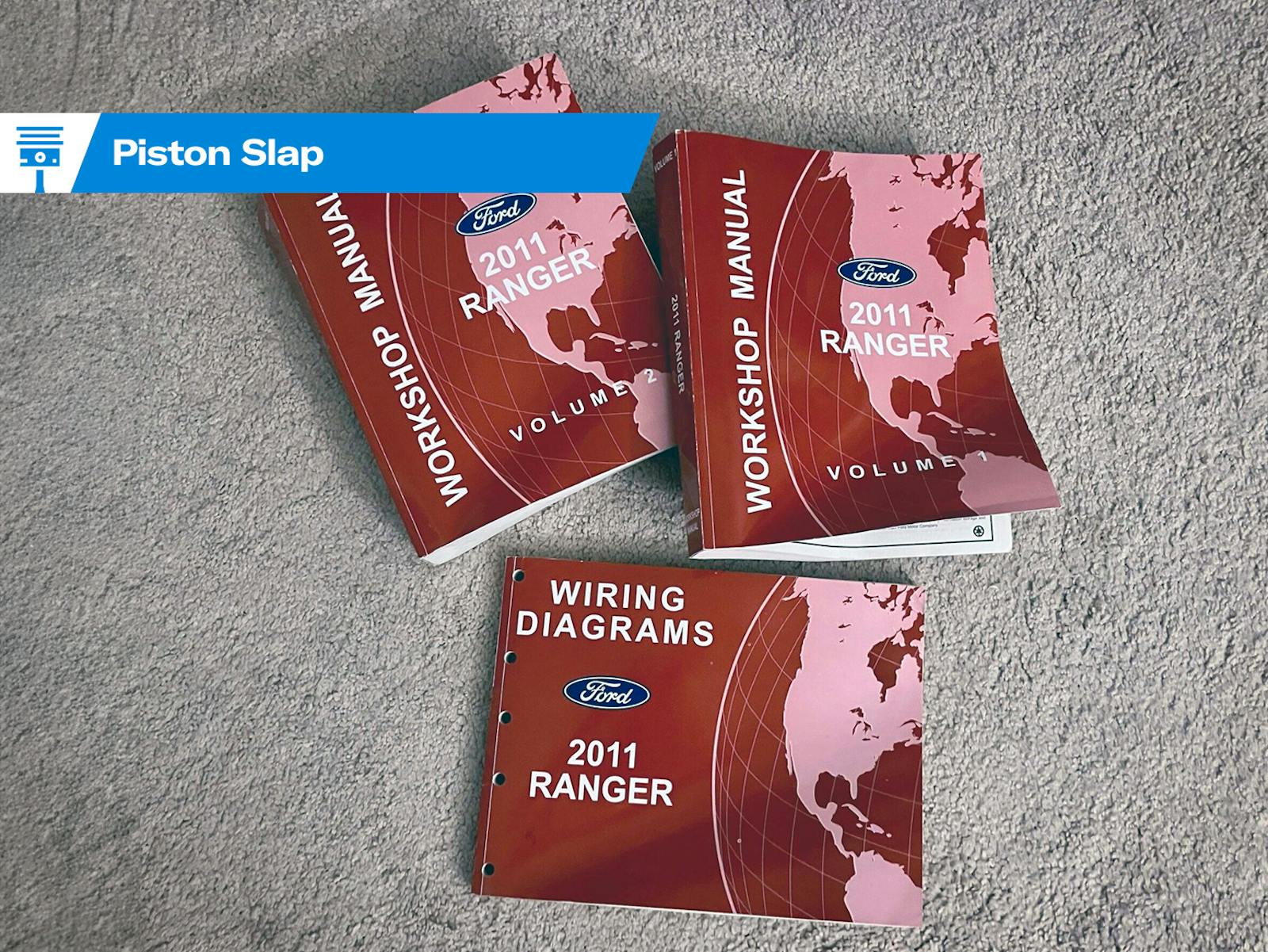Here’s how the 2021 Ford F-150 PowerBoost could charge your EV

One of the features available on the new 2021 Ford F-150 is the 430-hp PowerBoost hybrid powertrain, available as a $4495 upgrade from the base 2.7-liter V-6. Like many hybrid systems, the PowerBoost’s main purpose is to increase the truck’s fuel economy. In the case of the F-150, however, Ford cleverly decided to utilize this stored battery power by adding an inverter and creating the “Pro Power Onboard” power generator in the bed of the truck.
The generator and convenient charging setup got us thinking: Could you charge an EV out of the bed of your PowerBoost F-150? Follow along as we break down the numbers and the technology.
The onboard stats
The Pro Power Onboard generator with 2.0-kilowatt (kW) output is optional on all gasoline engines, but we’re interested in the 7.2-kW generator that comes as an $750 option on the PowerBoost F-150. (A 2.4-kW generator comes standard on the hybrid truck.) The power is accessible through cabin outlets and bed-mounted 120-volt (V) 20-amp (A) outlets. What makes the PowerBoost’s optional 7.2-kW generator especially interesting is the 240V 30A outlet mounted in the bed of the truck. Pretty convenient placement for an EV charging cord.
The PowerBoost’s 7.2-kW unit is comparable to a large, fairly powerful, portable generator. For comparison, Honda’s $4889 EU7000iS inverter generator delivers 7000 watts at either 120V or 240V. It has a 389-cc engine, can run up to 6.5 hours on full load with five gallons of gas, and weighs 261 pounds.

EV charger variations
So, what are the charging options for your average EV?
A Level 1 electric vehicle charger is a typical 120V, 20A household outlet into which the Electric Vehicle Supply Equipment (EVSE) is plugged. It supplies up to 1.9 kW of power and is the easiest way to charge an EV, but it’s also the most time-consuming.
A Level 2 charger is similar to a Level 1 charger because it can utilize household outlets, but it requires the 208–240V outlets commonly used for electric dryers or stoves. With a current draw of 40A, a Level 2 charger can provide up to 7.6 kW of continuous power.
A Level 3 charging is a bit tricky. It is a fast-charging 480V DC technology that doesn’t seem to have a standard at this time, and there aren’t many such chargers around. By and large, the United States is only using Level 1 and Level 2 technologies.
Tesla’s Supercharger network is an exception to the above. Each charger is, in theory, able to supply up to 150 kW, but many offer 72 kW. The third-generation Supercharger, known as V3, promises a 250-kW peak charging power capacity.

Can generator charge an EV?
Like a conventional car can run out of gas, an EV can run out of juice. Such scenarios are the fault of the operator, not of the vehicle, and require either towing or a small amount of go-juice. Refueling with gasoline is an easy, familiar process; recharging an EV on the side of the road is rather unusual. Could a generator rescue a stranded EV?
Most portable generators are not grounded in the same way that a typical electrical circuit in dwelling would be. Instead, portable generators use a floating ground circuit. When connected via an EVSE, the logic would find an open ground fault and not take charge, but there are ways around this. You can use a bonded generator or convert a floating ground generator to a bonded one; you can also properly ground the vehicle to the generator. There are also sketchier solutions, too, such as a bonding plug.
Please note that, in household use, a backup generator would use a transfer switch, which completely disconnects utility power when the home is running on a generator; you cannot install a transfer switch in an EV.
Can Ford’s 7.2-kW Pro Power Onboard charge an EV?
The optional Pro Power Onboard generator can provide up to 7.2 kW of power at 240V. Going strictly by numbers, this would qualify it as a Level 2 charger. However, the world is more complex than simple algebra.
Ford’s Pro Power Onboard was designed with contractors in mind. According to OSHA, portable generators used on construction sites do not need to be directly grounded as long as the generator supplies only the equipment connected through receptacles on the generator. That equipment is then grounded through the receptacles to the frame of the generator.
The power for the Pro Power Onboard outlets is sourced from the high-voltage (HV) hybrid batteries. Those batteries are charged by the engine, which is grounded to the chassis and the frame. In other words, Ford’s Pro Power Onboard is a bonded generator. Ford says that, for loads below 2.4 kW, the engine will cycle on and off to keep the HV batteries charged. For loads above 2.4 kW, the engine will run continuously. It should be noted that, due to their higher power, the HV batteries and the electric propulsion motors are not grounded to the vehicle chassis or frame.
The math and the grounding structure, therefore, allow the Pro Power Onboard to charge an electric vehicle. We reached out to Ford for comment and it confirmed that, in lab testing, the Pro Power Onboard was able to charge the Ford Mustang Mach-E, the brand’s only EV. (Ford, obviously, could not comment on other EVs.)
The new F-150 makes things even easier with a “generator mode.” This function allows the engine to charge the HV batteries and makes the power outlets available, but it locks the cabin and prevents someone from driving the vehicle away. A smartphone app provides updates on power usage and remaining fuel. The system shuts itself off once a minimum fuel level threshold is reached, preventing the tank from running dry.

How long would it take a charge an EV from the Pro Power Onboard?
The Pro Power Onboard is basically a Level 2 EV charger. It is limited to max power output of 7.2 kW. That is a little shy of a 7.6-kW of continuous power from a typical Level 2 charger, but it’s still significantly better than any Level 1 charger.
The battery capacity on the rear-wheel-drive Standard Range Mach-E is 75.7 kWh (though only 68 kWh of it is usable). You would need over nine hours to fully charge that battery with a 7.2-kW source, but let’s consider a worst-case, dead-battery situation. No one fills up the fuel tank on the side of the road when they run out of gas; they simply add a gallon or so to limp to the nearest gas station. Likewise, it makes no sense to fully charge a dead Mach-E battery from a pickup truck generator that runs on gasoline. You’d need about 3 kWh to give the Mach-E a 10-mile range which would, ideally, get you to the nearest charging station. At 7.2 kW, this calculates to about a 20–25 minute charge from the 2021 F-150’s Pro Power Onboard generator. Not bad for a roadside rescue strategy.
Conclusion
The new 2021 Ford F-150 appears more of an evolution from its aluminum-bodied predecessor than a complete revolution. That said, the addition of the Pro Power Onboard generator is very clever and certainly sufficient for emergency EV charging. It also provides enough power for a small house, though connecting one may be slightly more challenging than, say, a table saw. The PowerBoost and its 7.2-kW generator could prove invaluable for small construction crews using multiple power tools plugged into its convenient bed-mounted outlet. Ford offers no backup plan, however, if the truck’s owner has to make a Subway run.

